
| Four-barred Swordtail (previously known as Papilio leosthenes) PAPILIONIDAE, PAPILIONOIDEA | (donherbisonevans@yahoo.com) and Peter R. Samson & Stella Crossley |
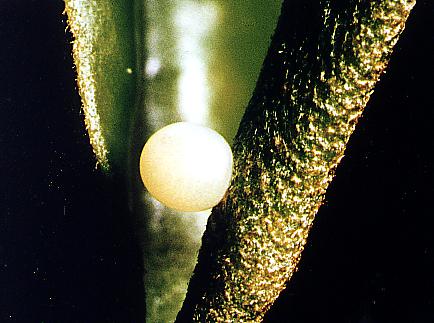
(Photo copyright: Peter Samson)

| Four-barred Swordtail (previously known as Papilio leosthenes) PAPILIONIDAE, PAPILIONOIDEA | (donherbisonevans@yahoo.com) and Peter R. Samson & Stella Crossley |

(Photo copyright: Peter Samson)
The eggs of this species are cream and laid singly on the of young leaves of the foodplant. The Caterpillar feeds on various plants in ANNONACEAE, including
When not eating, the caterpillar rests on a silken bed attached to the upper surface of a leaf.
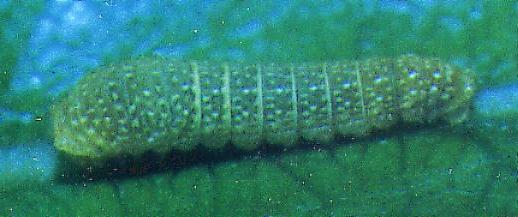
The caterpillars when young (the early instars) are pale green with black spots and black thorax and tail. Later, the caterpillar becomes brown. When mature it becomes green with brown or yellow spots, and a pale line along each side above the prolegs, and grows to a length of about 3.5 cms.
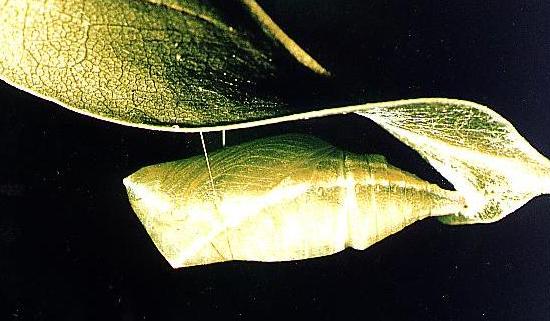
The pupa is quite stout, green with pink markings. It is secured under a leaf of the foodplant by a cremaster and girdle. The pupa has a length of about 2 cms.
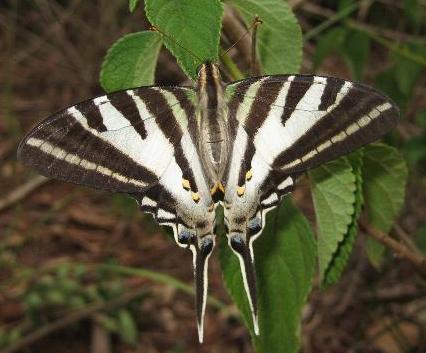
The adults have pale wings with black edges, and four black marks along the costa. The hindwings have very long tails, as long as the width of the hindwings. Underneath, the markings are similar, except the hindwings have some red markings. The wingspan is about 5 cms.
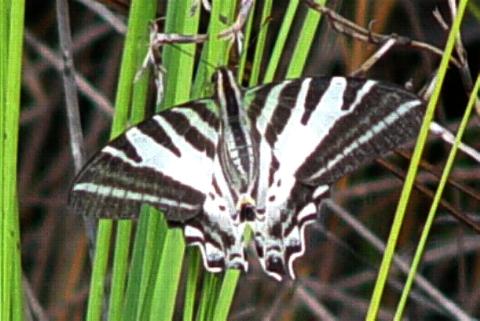
There is evidence that the prominent tails on the hindwings are a sacrificial distraction to predators, rather like the sacrificial loss of the tail by lizards.
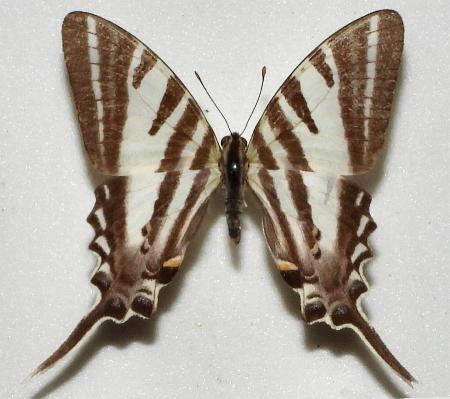
Two subspecies have been recognised in Australia :
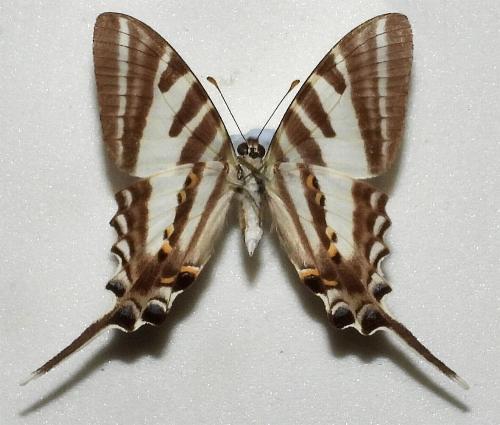
Further reading :
Michael F. Braby,
Butterflies of Australia,
CSIRO Publishing, Melbourne 2000, vol. 1, pp. 253-254.
Edward Doubleday,
Descriptions of New or Imperfectly Described Diurnal Lepidoptera,
Annals and Magazine of Natural History,
Volume 18, Part 121 (1846), pp. 372-373.
Frank Jordan & Helen Schwencke,
Create More Butterflies : a guide to 48 butterflies and their host-plants
Earthling Enterprises, Brisbane, 2005, pp. 19, 66.
Bob Miller,
Four-barred Swordtail (Protographium leosthenes leosthenes),
Butterflies and Other Invertebrates Club,
Newsletter,
Issue 18 (September 2000) pp. 4-5.
 caterpillar |  butterflies |  Lepidoptera |  moths |  caterpillar |
(updated 28 September 2010, 8 August 2024)